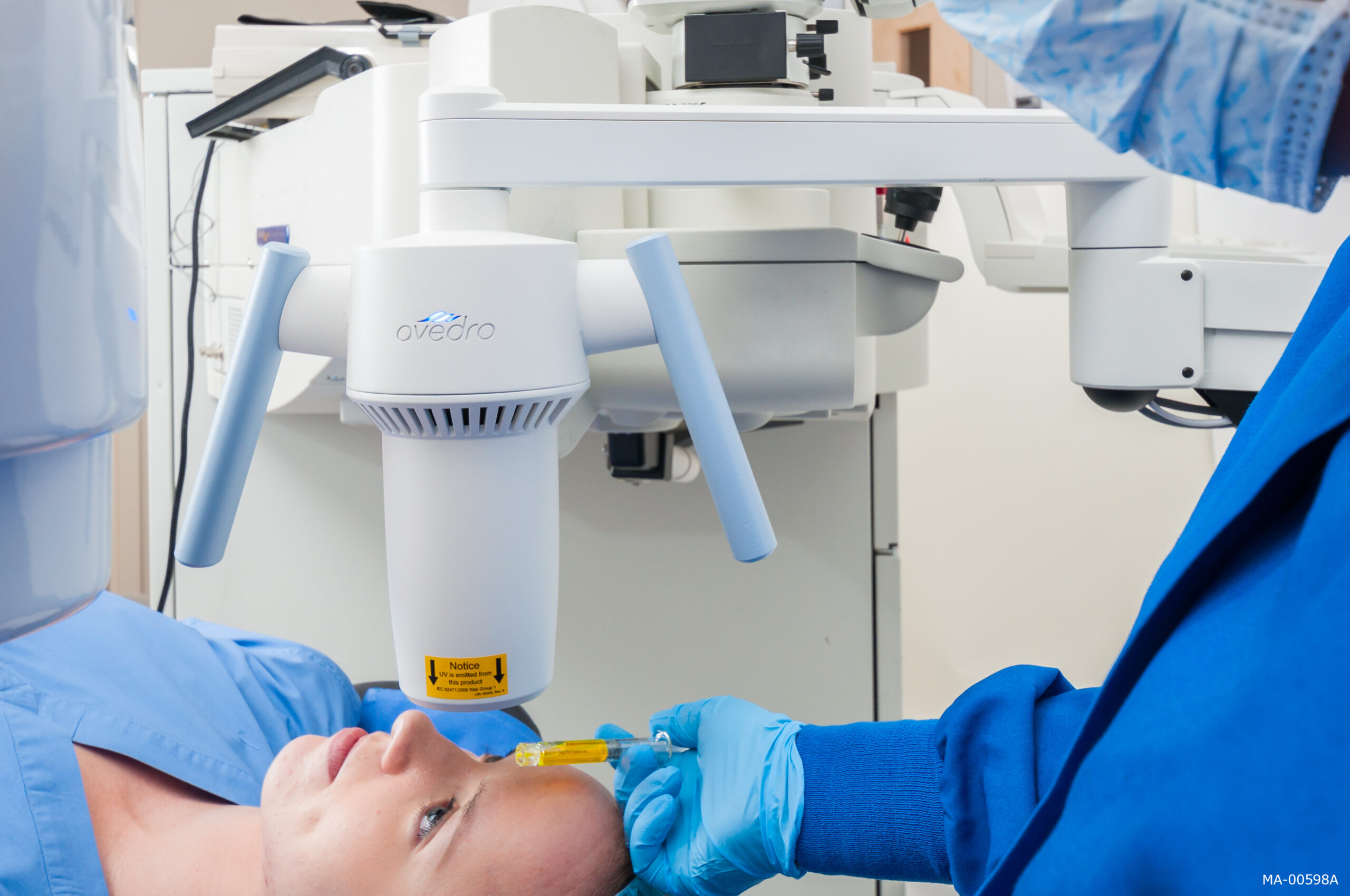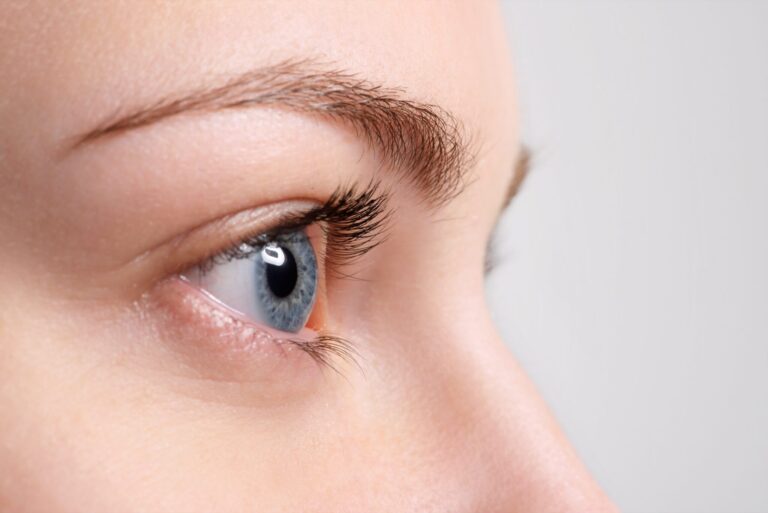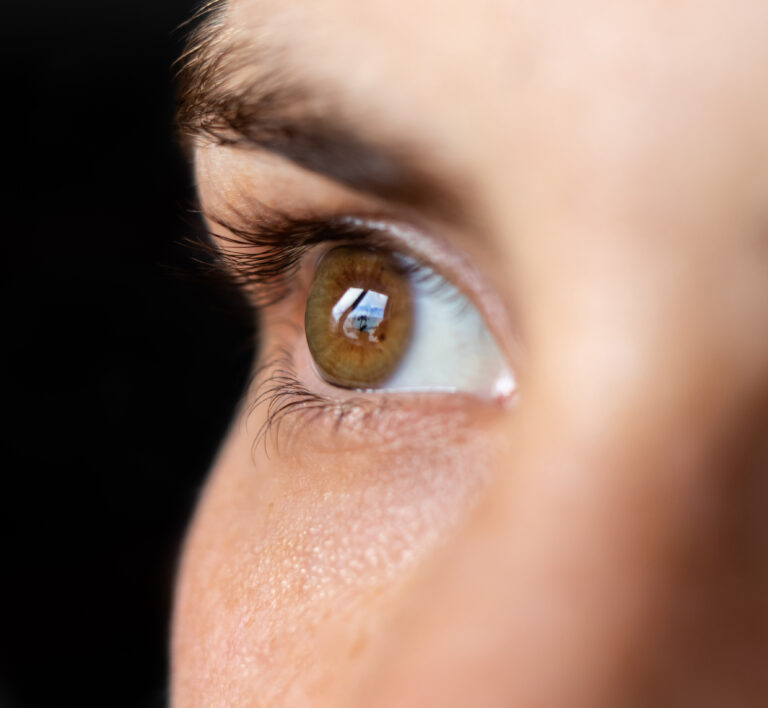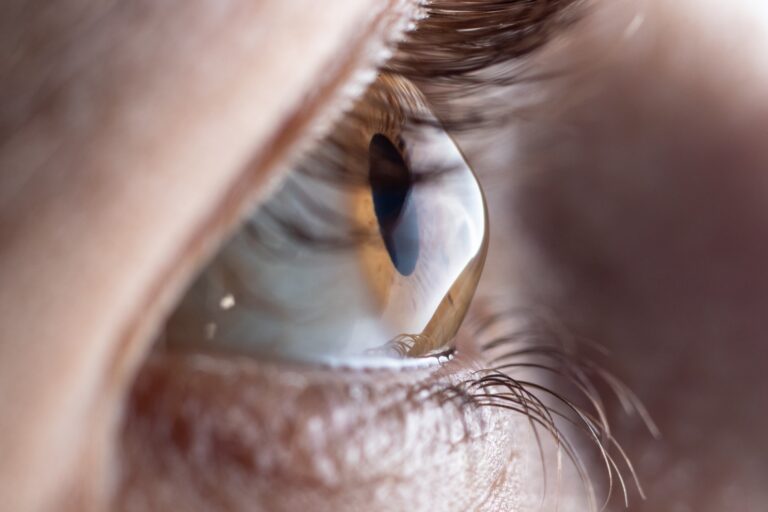
What is Corneal Cross-Linking?
Corneal cross-linking (CXL) is an advanced procedure that helps decrease corneal thinning, which is caused by various corneal defects, including keratoconus, pellucid marginal degeneration, and other conditions. By combining riboflavin and ultraviolet light, CXL helps strengthen and bond the collagen fibers located within the corneal tissue. CXL is an effective treatment for preventing the deterioration of corneal tissue; however, it cannot correct your vision, cure the disorder, or modify the structure and shape of the cornea.
At Ophthalmology Associates of the Valley in San Fernando Valley of Los Angeles, CA, our team of expert ophthalmologists has years of experience performing corneal cross-linking or CXL procedures. If you suffer from a corneal disease or condition that creates thinning in the cornea tissue, please contact one of our offices in Encino and West Hills for additional information. Our group can properly diagnose you and help you determine if CXL is right for you.
What is Ectasia?
Caused by various eye disorders, such as keratoconus and pellucid marginal degeneration, ectasia happens if the corneal tissue starts to weaken and thin. When these types of diseases start to progress, the cornea loses its shape and the inability to maintain its structure. This causes the cornea to become oblong and protrude. Because the cornea plays such a big part in visual acuity, if it changes shape, it can start to affect your eyesight.
What are the benefits of corneal cross-linking?
Corneal cross-linking is a procedure designed to strengthen the cornea if it’s been weakened by keratoconus or other corneal diseases. Here’s how it can make a difference:
Halts Progression of Peratoconus
By strengthening the corneal tissue, corneal cross-linking can stop the progression of keratoconus, preventing further vision deterioration.
Improves Corneal Stability
The treatment increases corneal rigidity, leading to a more stable and structurally sound cornea.
Potentially Reduces the Need for a Corneal Transplant
By halting the progression of the disease and stabilizing the cornea, some patients may avoid the need for a more invasive corneal transplant.
Enhances Quality of Life
By stabilizing vision, patients can enjoy improved daily functioning and potentially better quality of life.
Short Recovery Period
The recovery time is relatively short compared to other surgical interventions, with most people returning to their normal activities within a few days to weeks.
Understanding these benefits is just the first step. If you’re considering this procedure, a detailed discussion with your healthcare provider can provide further personalized information and guidance.
How does corneal cross-linking work?
We can help you schedule your CXL consultation at either of our Los Angeles, CA locations. CXL is a minimally invasive, outpatient procedure. Before your treatment, our expert eye surgeons will utilize state-of-the-art technology to determine which parts of your cornea have started to deteriorate, and they will also assess the severity of your condition. If needed, we can combine CXL with other treatments that help strengthen the corneal tissue. As we design your treatment plan, we discuss all of the options that work best for your condition and provide you with the proper post-care instructions.
To perform the CXL treatment, we will ask you to rest comfortably in a treatment chair. During your procedure, we operate on one eye at a time, and as your eye is treated, a small device will hold your eye open. This device does not cause any pain. Generally, most patients will need the epithelium coating gently removed so we can easily access the corneal tissue. This step allows the riboflavin eye drops to deeply penetrate the cornea. Next, a specialized ultraviolet light is shined into the eye as we gently administer the riboflavin eye drops.
Am i a candidate for corneal cross-linking?
CXL works best for patients who have been diagnosed with keratoconus, pellucid marginal degeneration, post-LASIK ectasia, and other common eye problems that cause the cornea to thin. Also, CXL may help men and women who experience persistent glare or halo problems, eye inflammation, or sensitivity to light because of corneal disorders. During your CXL consultation, our skilled ophthalmologists will complete a comprehensive eye assessment and perform advanced diagnostic exams to decide if CXL works best for your eye condition.
What to expect after corneal cross-linking
If we removed your epithelium layer, you will have to wear specialized contact lenses that act as bandages for about a week after your treatment. Our doctors will take the time to thoroughly discuss your post-care instructions and answer any questions you may have. It’s extremely important that you carefully follow the directions to ensure proper healing. Before your surgery, we will schedule a series of follow-up appointments to check your healing and progress. If you notice any side effects, such as swelling, pain, or an infection, please contact Ophthalmology Associates of the Valley as soon as possible.
Corneal cross-linking FAQs
Protect your corneas
Corneal cross-linking is a new innovative treatment that can help slow corneal thinning and may reduce the need for a corneal transplant.
If you suffer from ectasia or keratoconus, or another eye disorder that leads to corneal thinning, please reach out to Ophthalmology Associates of the Valley in the San Fernando Valley of Los Angeles, CA to receive additional information.
Our board-certified ophthalmologists in Encino and West Hills strive to help you see better and live more comfortably!





